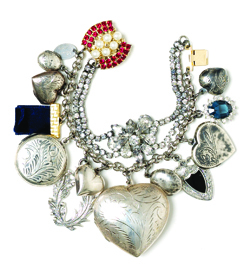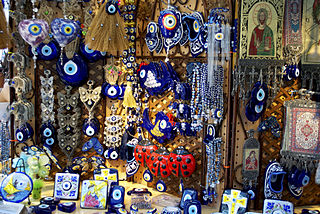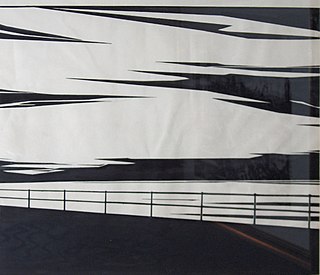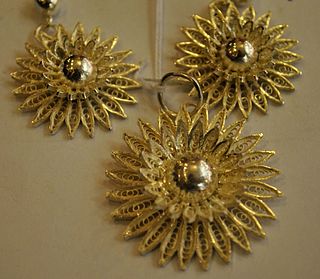This article does not cite any sources .(July 2015) (Learn how and when to remove this template message) |

Rice writing is the art and skill of being able to write small enough to write on a grain of rice.
This article does not cite any sources .(July 2015) (Learn how and when to remove this template message) |

Rice writing is the art and skill of being able to write small enough to write on a grain of rice.
Rice writing originated in ancient Anatolia in Turkey and India. Many rituals and rites use rice as a medium, but at some point in ancient Anatolia artisans who were skilled in making miniature paintings decided to turn their skill to making art with what had always been an ancient symbol of prosperity, the oldest example of which lies in Topkapi Palace in Istanbul, Turkey. The artisans would inscribe messages or names on a single grain of rice after it was treated and polished. Grains that were long and flat were favorites as they offered proper surfaces for writing. Apart from Turkey, India also had a large number of artisans skilled in making miniature art including rice art.
Rice art is considered to bring good luck hence some of its most popular forms is good luck pendants, hope bracelets and cell phone charms.
Within time rice writing and rice art evolved, soon creating rice jewelry where the rice grain was enclosed in a vial with a liquid/oil that magnifies the individual grain making it easier to appreciate the painstaking and intricate details. This went further with rice jewelry like good luck pendants, charm bracelets, anklets and earrings. In modern times most of these artisans and artists set up shop with street side stalls where they can write customers' message or name on a rice grain while displaying their wares and hard work.
Most modern day rice writers use the following tools:
A rare but verifiable art form of writing on rice is from brush also.
Once the rice writing is complete, it is usually preserved in a small vial of liquid/oil. Many craftsman mount these vials into jewelry such as necklaces, bracelets and key chains.

Beadwork is the art or craft of attaching beads to one another by stringing them with a sewing needle or beading needle and thread or thin wire, or sewing them to cloth. Beads come in a variety of materials, shapes and sizes. Beads are used to create jewelry or other articles of personal adornment; they are also used in wall hangings and sculpture and many other artworks.

A ballpoint pen, also known as a biro or ball pen, is a pen that dispenses ink over a metal ball at its point, i.e. over a "ball point". The metal commonly used is steel, brass, or tungsten carbide. The design was conceived and developed as a cleaner and more reliable alternative to dip pens and fountain pens, and it is now the world's most-used writing instrument; millions are manufactured and sold daily. It has influenced art and graphic design and spawned an artwork genre.

Jewellery or jewelry consists of decorative items worn for personal adornment, such as brooches, rings, necklaces, earrings, pendants, bracelets, and cufflinks. Jewellery may be attached to the body or the clothes. From a western perspective, the term is restricted to durable ornaments, excluding flowers for example. For many centuries metal such as gold used in different carats from 21, 18, 12, 9 or even lower, often combined with gemstones, has been the normal material for jewellery, but other materials such as shells and other plant materials may be used.

A pen is a common writing instrument used to apply ink to a surface, usually paper, for writing or drawing. Historically, reed pens, quill pens, and dip pens were used, with a nib dipped in ink. Ruling pens allow precise adjustment of line width, and still find a few specialized uses, but technical pens such as the Rapidograph are more commonly used. Modern types include ballpoint, rollerball, fountain and felt or ceramic tip pens.

A bracelet is an article of jewellery that is worn around the wrist. Bracelets may serve different uses, such as being worn as an ornament. When worn as ornaments, bracelets may have a supportive function to hold other items of decoration, such as charms. Medical and identity information are marked on some bracelets, such as allergy bracelets, hospital patient-identification tags, and bracelet tags for newborn babies. Bracelets may be worn to signify a certain phenomenon, such as breast cancer awareness, or for religious/cultural purposes.

Iron gall ink is a purple-black or brown-black ink made from iron salts and tannic acids from vegetable sources. It was the standard ink formulation used in Europe for the fourteen-hundred-year period between the 5th and 19th centuries, remained in widespread use well into the 20th century, and is still sold today.
A writing implement or writing instrument is an object used to produce writing. Writing consists of different figures, lines, and or forms. Most of these items can be also used for other functions such as painting, drawing and technical drawing, but writing instruments generally have the ordinary requirement to create a smooth, controllable line.

A flatbread is a bread made with flour, water, and salt, and then thoroughly rolled into flattened dough. Many flatbreads are unleavened, although some are leavened, such as pizza and pita bread.

A charm bracelet is a type of bracelet which carries personal jewelled ornaments or "charms", such as decorative pendants or trinkets. The decorative charms usually carry personal or sentimental attachment by the owner.

A nazar is an eye-shaped amulet believed to protect against the evil eye. Hindi, Urdu, Pashto, Bengali, Kurdish, Persian, Punjabi, and other languages have borrowed the term as well. In Turkey, it is known by the name nazar boncuğu, in Greece is known as mati. In Persian and Afghan folklore, it is called a cheshm nazar or nazar qurbāni. In India and Pakistan, the Hindi-Urdu slogan Chashm-e-Baddoor is used to ward off the evil eye. In the Indian subcontinent, the phrase "Nazar lag gai" is used to indicate that one has been affected by the evil eye.

A reed pen is a writing implement made by cutting and shaping a single reed straw or length of bamboo.
This article refers to the jewelry of the Etruscan civilization and its differences in various eras.

Klutz is a publishing company started in Palo Alto, California in 1977. It was acquired by Nelvana in April 2000 and became a subsidiary of Scholastic Inc. in 2002. The first Klutz book was a how-to guide titled Juggling for the Complete Klutz, which came provided with juggling beanbags attached in a mesh bag. The book was created by three friends who graduated from Stanford University: Darrell Lorentzen, John Cassidy, and B.C. Rimbeaux. Since then the company has continued to specialize in activity-driven books sold along with other items needed for the activity. Not all the books are about developing a skill; there has also been a geography book containing, among other physical attachments, packets of rice corresponding to the average daily caloric intake among the poorest people of the world. Many of their books are spiral bound and teach various crafts. The items needed are usually included with the book, e.g. the juggling guide. The Klutz credo is: Create wonderful things, be good, have fun.

A nib is the part of a quill, dip pen, fountain pen, ball point or stylus which comes into contact with the writing surface in order to deposit ink. Different types of nibs vary in their purpose, shape and size, as well as the material from which they are made.

India ink is a simple black or coloured ink once widely used for writing and printing and now more commonly used for drawing and outlining, especially when inking comic books and comic strips. India ink is also used in medical applications.

Tarakasi is a type of silver filigree work from Cuttack, a city in Odisha in the eastern part of India.

Native American jewelry refers to items of personal adornment, whether for personal use, sale or as art; examples of which include necklaces, earrings, bracelets, rings and pins, as well as ketohs, wampum, and labrets, made by one of the Indigenous peoples of the United States. Native American jewelry normally reflects the cultural diversity and history of its makers, but tribal groups have often borrowed and copied designs and methods from other, neighboring tribes or nations with which they had trade, and this practice continues today. Native American tribes continue to develop distinct aesthetics rooted in their personal artistic visions and cultural traditions. Artists may create jewelry for adornment, ceremonies, and display, or for sale or trade. Lois Sherr Dubin writes, "[i]n the absence of written languages, adornment became an important element of Indian communication, conveying many levels of information." Later, jewelry and personal adornment "...signaled resistance to assimilation. It remains a major statement of tribal and individual identity."

Ancient Roman jewelry was characterized by an interest in colored gemstones and glass, contrasting with Greek predecessors, which focused primarily on the production of high-quality metalwork by practiced artisans. Various types of jewelry were worn by different genders and social classes in Rome, and were used both for aesthetic purposes and to communicate social messages of status and wealth.

Kazaziye,, is a Turkish jewelry making technique. Kazaziye is a historical technique from the Caucasus. Kazaziye is a local art from the northern Turkish city Trabzon. Kazaziye made by hand with only 1000 carat silver or 24 carat gold. The exact history of Kazaz is not well-known, however, it is said that this art was born in Mesopotamia area by Lydians in 2800 BC and later spread north to Anatolia.

Lock charms are Chinese numismatic charms shaped like ancient Chinese security locks. Their shape resembles a basket or in most cases the Chinese character for "concave" (凹). The pendants tend to be flat, without any moving parts, or the functionality of the locks they symbolize. They are decorated with both Chinese characters and symbols. Like other types of Chinese numismatic charms, lock charms are meant to protect the wearers from harm, misfortune, and evil spirits, and to bless them with good luck, longevity, and a high rank. In particular, this talisman is meant for young boys, to help "lock" them to the earth, to guard them from death.